
Introduction
The fictitious, but prestigious Regional General Hospital has been very busy lately caring for many Covid 19 patients. The staff noticed, while taking patient histories, that many patients did not lead a very healthy lifestyle. As one of the data analysts on staff, I was tasked with exploring and visualizing the COVID-19 Healthy Diet Dataset to determine if nutritional choices affect Covid-19 outcomes. This will help healthcare providers offer guidance on patient's nutritional choices to achieve better outcomes if infected with covid 19.
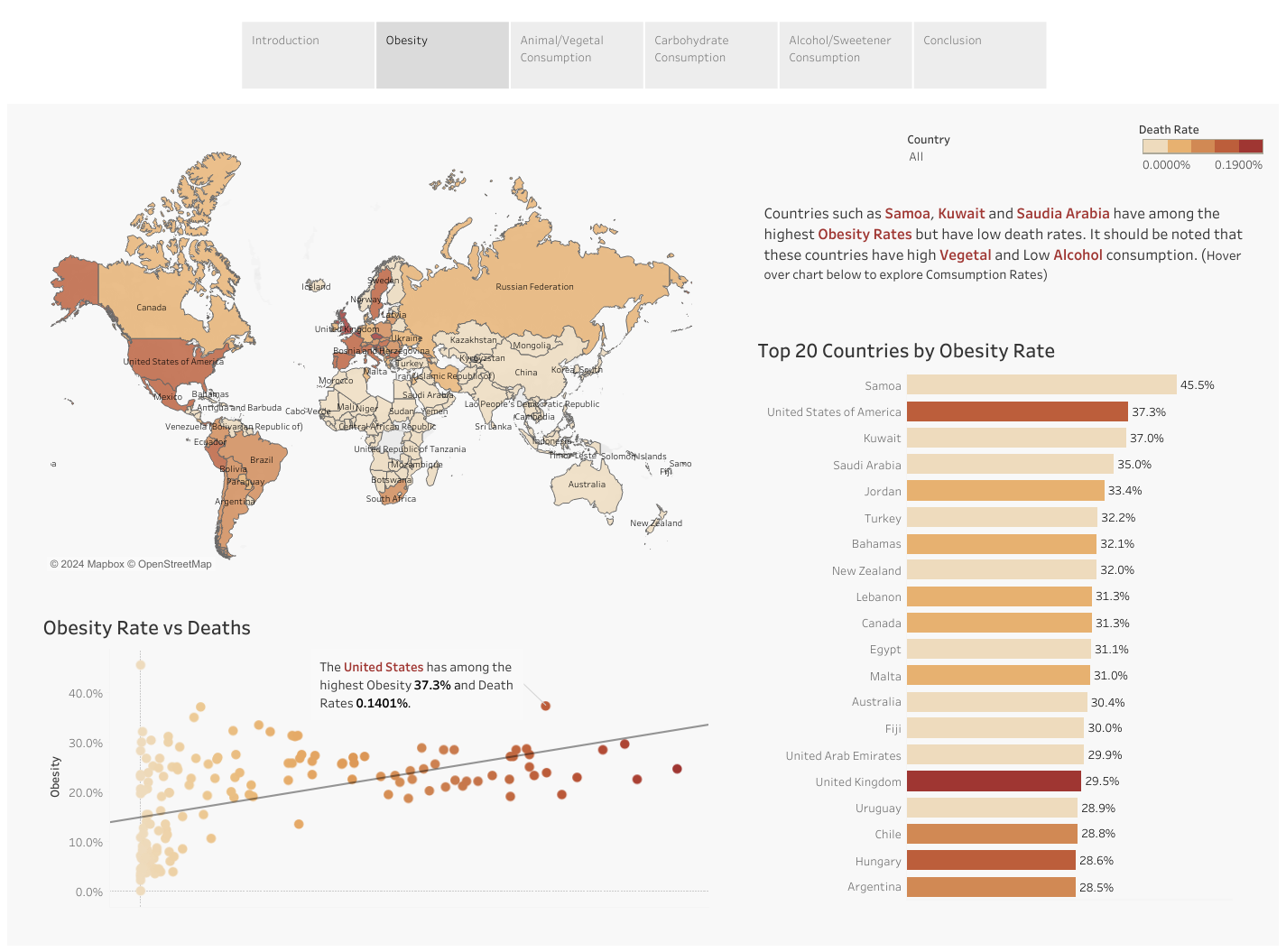
The dashboard story has 4 pages to navigate for insights on Obesity, Food Consumption vs Covid-19 along with Introduction and Conclusion pages. It also has filters and tooltips to extract more information.
To view the full interactive Tableau Story/Dashboard click Here
Stakeholders
Two stakeholders/personas were created for this project:Hospital Administrator: The main stakeholder is a hospital administrator who is trying to come up with a plan to help reduce Covid 19 severity and negative outcomes. She will present the findings and recommendations to the 3 department heads.
Hospital department heads: The final presentation is intended for the heads of the Medical, Nursing and Dietary departments at the hospital. This will dictate how the members of each department will advise their patients when it comes to diet and Covid 19.
Business Questions
- How do nutritional choices affect Covid 19 outcomes?
- How can healthcare providers help guide patient's nutritional choices to achieve better outcomes if infected with covid 19?
About the Data
The Kaggle COVID-19 Healthy Diet Dataset by Maria Ren includes information about global COVID-19 cases rates, world population, obesity rates, undernourished rates and food data. The Covid data is from the week of 02/06/2021. The author calculated fat quantity, energy intake (kcal), food supply quantity (kg), and protein (as percentage of total intake) for different categories of food.
The data is contained in 4 tables consisting of 32 fields in csv format. 171 records contain country nutrition data but only 164 records contain country Covid data. Only those 164 countries with complete data for Covid and nutrition were used in this analysis, using an Inner Join in Tableau.
Tools Used
Excel (Data Cleaning)
Tableau (Visualization)
Insights
Obesity rates have been steadily increasing worldwide. Obesity puts people at increased risk for many diseases according to the CDC. It's no surprise to find that there is a positive correlation between Obesity Rates and Death Rates. Countries with higher Obesity Rates also have higher Covid-19 death rates.
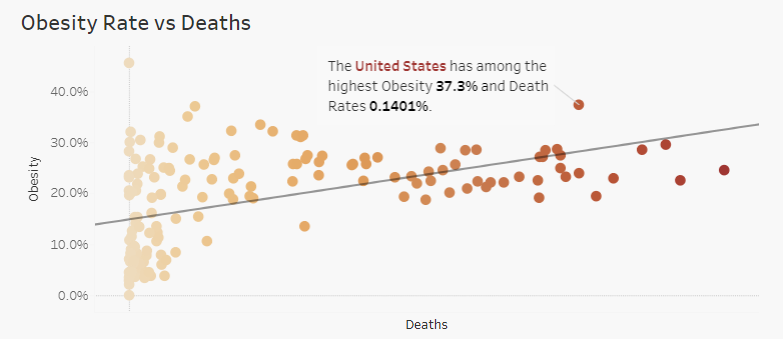
Surprisingly countries such as Samoa, Kuwait and Saudi Arabia have among the highest Obesity Rates but have low death rates. Many factors could be contributing to this, but it should be noted that these countries have high Vegetal and low Alcohol consumption.
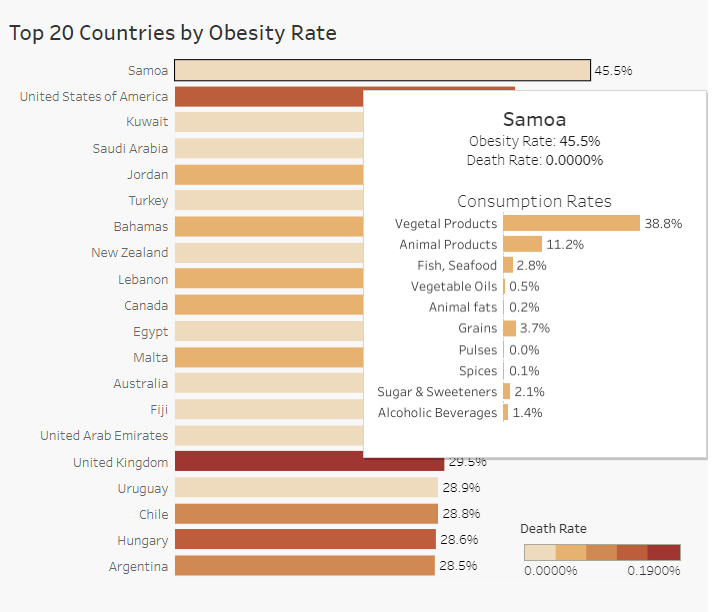
Countries with higher Animal Products (excluding seafood) and Animal Fat consumption have more deaths overall than countries with higher Vegetal Products consumption.
Although Seafood is an Animal Product, lower death rates were noted in countries with the highest consumption.
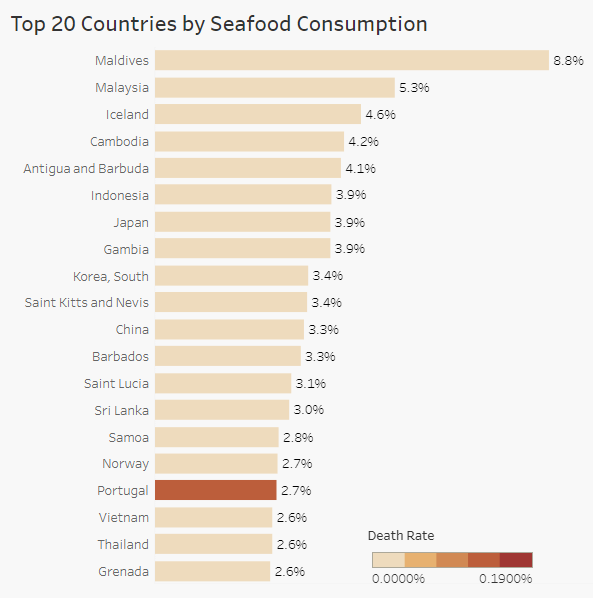
Countries with higher Grain, Pulse and Spice consumption had lower Death Rates.
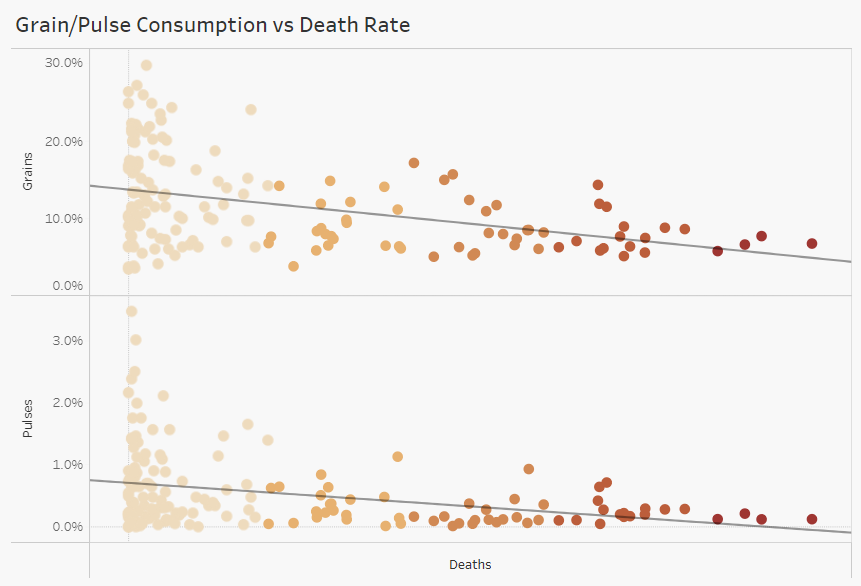
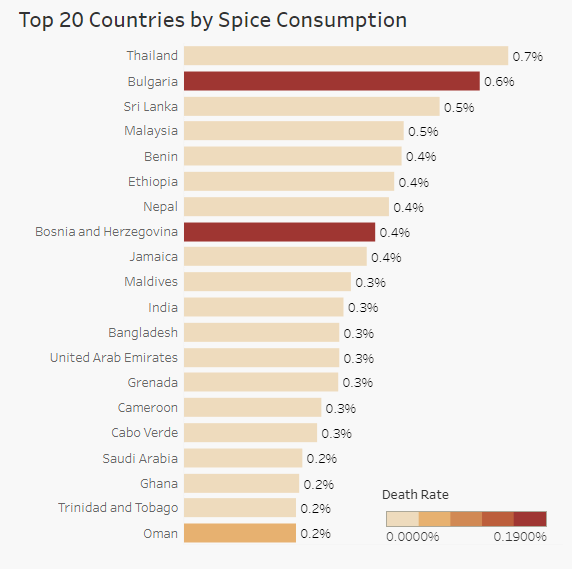
Countries with higher Alcohol and Sugar consumption had higher death rates. Interestingly, Burkina Faso has the highest Alcohol consumption but has a low death rate. Note that they have low Animal and High Vegetal and Grain consumption.
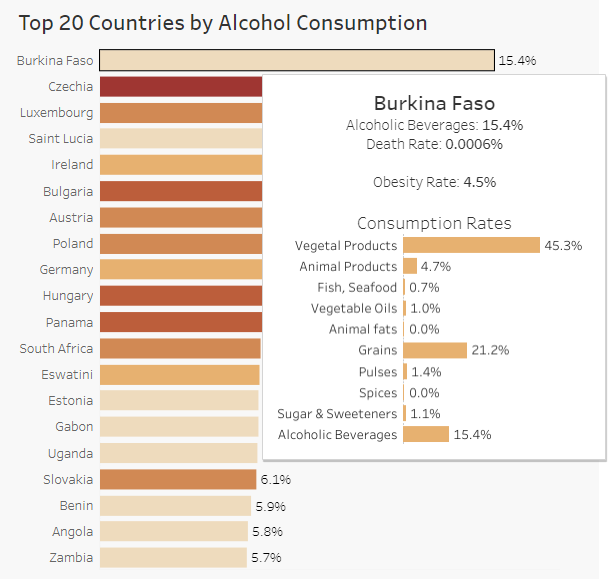
Recommendations
The medical staff should advise patients to:The medical staff should also help obese patients create a plan so they can achieve a healthy weight.
Data Limitations
- Only 164 out of the 195 countries of the world are represented in the data. All countries would need to be represented to conduct a more complete analysis.
- The obesity rate can vary significantly within countries, so it's important to look at regional and sub-national data as well to determine if obesity is in fact leading to increased covid deaths.
- Many socioeconomic factors not included in this analysis can influence Covid outcomes and should be investigated for a more complete analysis.
- The data groups all foods in their respective categories. It does not distinguish between 'healthy' oils (olive and avocado) vs 'inflammatory' oils (partially hydrogenated oils), ultra processed food vs food in its whole form and organic vs conventionally grown food.
Final Thoughts
I found this project interesting because I try to maintain a healthy diet/lifestyle and I was curious to see if it does indeed provide an advantage when it comes to Covid-19 infection outcomes. This was the Capstone Project for the UC Davis Data Visualization with Tableau Specialization.
Data Source
COVID-19 Healthy Diet DatasetContact Me
Location
Miami, Fl
alsinajacks@gmail.com